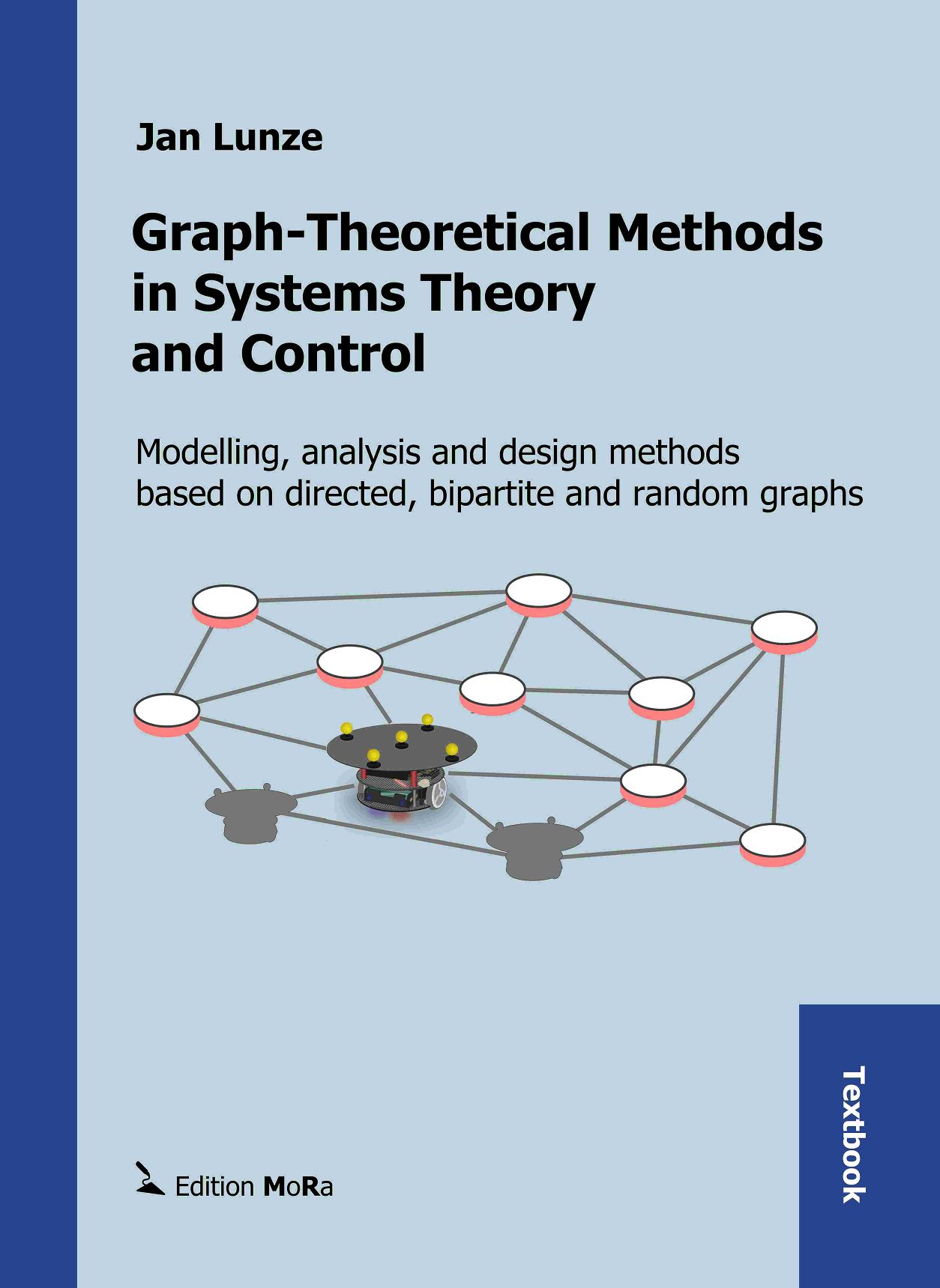Jan Lunze
Graph-Theoretical
Methods
in Systems Theory and Control
Modelling, analysis
and design methods
based on directed graph, bipartite graphs, and random graphs
1st edition 2024, XXVII, 765 pp.
With 516 figures, 115 examples, 117 exercises and MATLAB scrips
Edition MoRa
ISBN 9789403726854
Many dynamical phenomena seem to be very complex, but have a simple structural cause, which can be discovered by graph-theoretical means. This textbook describes for numerous scenarios how to use the structural properties of a system to simplify modelling, analysis or design tasks. The readers learn to extract structure graphs from diverse information about a system and to solve problems of systems and control theory in a graph-theoretical way.
Numerous graph-theoretical representations of dynamical systems have been developed for different analysis and design problems:
- Block diagrams and coupling graphs for the decomposition of systems
- Signal-flow graphs for the analysis of interconnected linear systems
- Bayesian networks for dealing with probabilistic information
- Inference graphs for knowledge-based problem solving
- Automaton graphs for the analysis of discrete-event systems
- Circuit graphs for modelling electrical networks
- Structure graphs for the analysis of generic properties of linear systems
- Flow networks for the representation of flow and transportation systems
- Communication graphs for the design of networked control systems
- Bipartite structure graphs for the decomposition of linear constraint sets
- Bipartite graphs for fault diagnosis
- Random coupling graphs to use the small-world property of large systems

Additional information
Flyer

